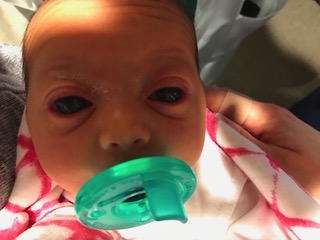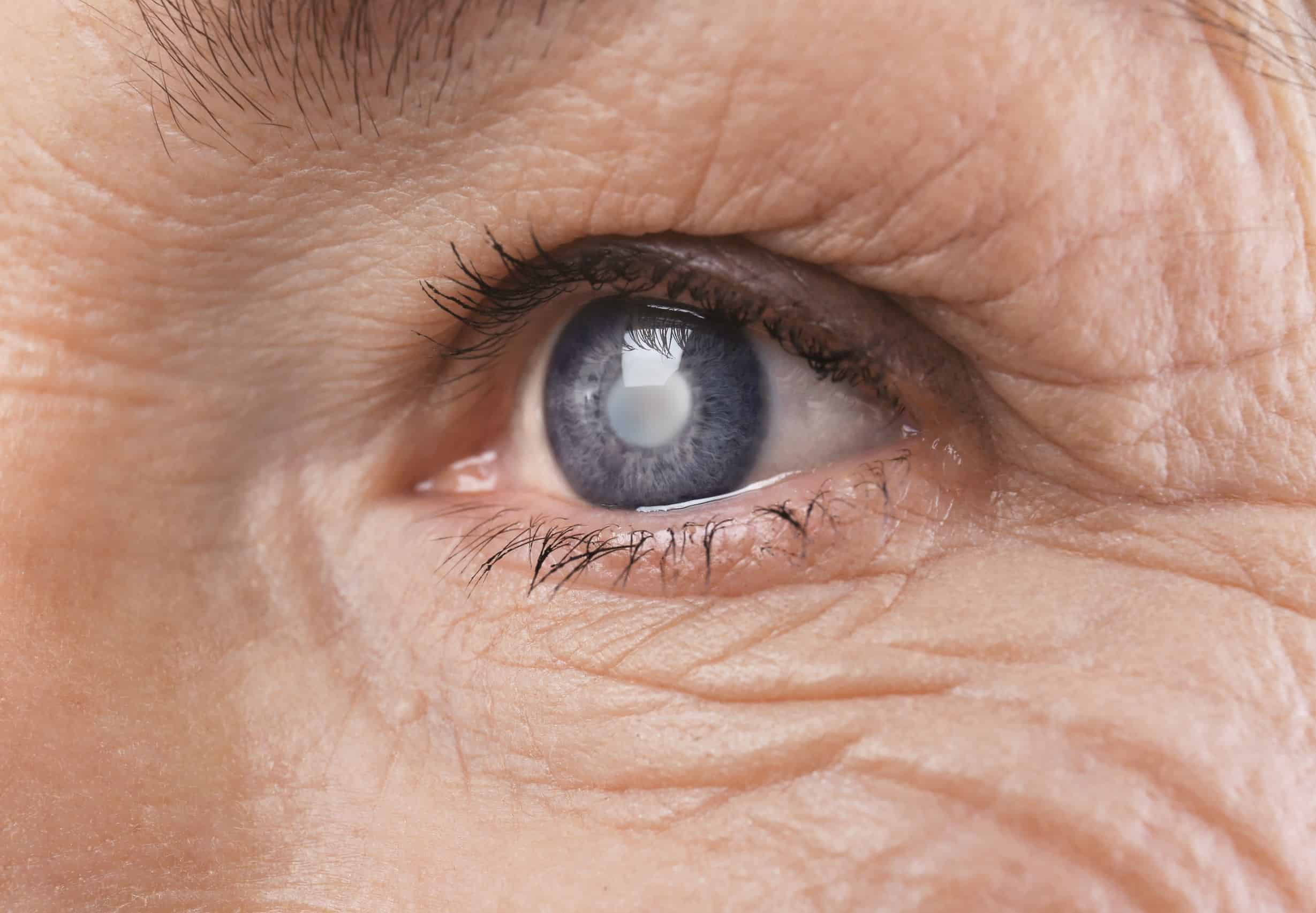acute glaucoma in babies
Glaucoma is rare in children as compared to the adult. Many children are diagnosed before they are 6 months old.

Pin On Primary Congenital Glaucoma
Children with Primary Congenital Glaucoma are most often diagnosed within the first year of life.

. Glaucoma can affect one eye or both. Its possible for infants and children to have glaucoma. Infantile glaucoma develops between the ages of 1-24 months.
One way to classify glaucoma is based on the age of onset. How is it Diagnosed. Infantile glaucoma can cause complete blindness if left untreated.
These secondary symptoms are especially common with acute glaucoma. In childhood glaucoma can be very aggressive. It is often first noticed when an acquaintance is shown photographs and they comment on very large-appearing eyes.
Early-onset glaucoma is the term used when glaucoma appears in someone younger than 40. Juvenile open-angle glaucoma which affects people between the ages. The patient can lose sight very quickly.
However when it does occur the symptoms may not be as obvious in children. This is a rare condition that may be inherited caused by incorrect development of the eyes drainage system before birth. Angle-closure glaucoma may occur suddenly acute angle-closure glaucoma or gradually chronic angle-closure glaucoma.
A child can either be born with glaucoma or develop it later. Examples include irritability loss of appetite and vomiting. This is not an 80-year-old whose vision is slowly going said Faruk H.
While glaucoma is a concern of older people it can affect younger people too. Treatment may include medicines andor surgery. Glaucoma with onset after age 3 years is called juvenile glaucoma.
It affects children between birth and 3 years. Medical. Congenital glaucoma is present at birth.
Primary infantile glaucoma is a rare developmental defect in the iridocorneal filtration angle of the anterior chamber that prevents aqueous fluid from properly draining from the eye. Angle surgery is considered the mainstay of treatment for primary congenital glaucoma with a reported 70 to. Most children with glaucoma will have an IOP that is higher than 22 mm Hg.
Acute angle-closure glaucoma is a medical emergency. Signs of glaucoma in babies also include unusually large eyes or excessive tearing. Primary congenital glaucoma PCG is.
These symptoms may be misunderstood before the glaucoma is recognized. Another way to classify glaucoma is to describe the structural abnormality or systemic condition which underlies the glaucoma. Grajewski MD at Bascom Palmer.
Without treatment glaucoma can cause permanent loss of eyesight. Glaucoma can affect one eye or both. It may be present from birth or develop in the first few years of life.
Developmental pediatric or childhood glaucoma usually refers to the latter developing after birth. The most common glaucoma in babies and small children. 3 The IOP usually ranges from 10 to 15 mm Hg in newborns whereas the IOP in children of school age resembles that of adults.
It is usually diagnosed within the first year of life. Diagnosing Glaucoma in Children In most cases primary congenital glaucoma is diagnosed within the childs first year. Glaucoma refers to a group of eye diseases in which fluid builds up in the eye creating pressure that damages the optic nerve and leads to vision loss.
Light sensitivity photophobia corneal opacification hazy gray cornea enlarged eye and cornea epiphora overflow of tears vision loss. Symptoms can include. Developmental glaucoma is a type of glaucoma that occurs in babies young children and teenagers.
Large eyes a dull or cloudy eye tears when not crying redness in the sclera the white part of the eye sensitivity to light. It is often used for. Glaucoma in children is rare but when it occurs the built-up pressure intraocular pressure in the eye can lead to optic nerve damage causing vision loss or light sensitivity 1.
The symptoms of developmental glaucoma can include. It occurs when the eye hasnt developed properly in the womb and this leads to issues with the flow of aqueous fluid out of the eye. Signs to look for include excessive tearing large eyes cloudy corneas hiding from bright light and squeezing the eyelids.
Örge MD at Case Western Reserve University. In children it can be an all-or-none situation said Alana L. However when it does occur the symptoms may not be as obvious in children.
In babies doctors might notice eye shape or size issues that are clues a child might have glaucoma. Glaucoma is a medical condition that develops when aqueous humor fluid in the eye that normally moves in and out of the eyes cannot drain from the eyes. However each child may experience symptoms differently.
Primary congenital glaucoma PCG accounts for approximately 50 to 70 of all cases of childhood glaucoma. This obstruction increases the intraocular pressure which if untreated damages the optic nerve. If the fluid is unable to drain effectively it builds up inside the eye and causes the eye pressure to rise.
Young children with glaucoma are often unhappy fussy and poor eaters. Children can develop it as they grow. Many children are diagnosed before they are 6 months old.
Glaucoma is rare in children as compared to the adult. Childhood glaucoma occurs in 1 out of every 8000 children in the United States. However each child may experience symptoms differently.
When glaucoma occurs in children intraocular pressure inside the eye is too high due to a build-up of fluid. The following are the most common symptoms of childhood glaucoma. Medical therapy in pediatric glaucoma is often supplementary to surgical management.
In some cases a baby will be born with. Childhood glaucoma also referred to as congenital glaucoma pediatric or infantile glaucoma occurs in babies and young children. Acute angle-closure glaucoma can damage your vision cause severe eye pain nausea vomiting and headache.
Glaucoma can strike even newborn infants. While glaucoma cant be cured early treatment can often control it. Babies with glaucoma may have.
Can children get glaucoma. Like the most common form of glaucoma in adults primary open-angle glaucoma developmental glaucoma causes damage to the optic nerve. Its a type of glaucoma a group of diseases in which high fluid pressure in your eye damages the optic nerve.
Glaucoma can occur in any age throughout childhood. But glaucoma doesnt always show up right away. A corneal diameter of greater than 120 mm in any infant younger than 1 year is therefore suspicious for glaucoma.
The following are the most common symptoms of childhood glaucoma.

Glaucoma The Inherited Gene Has Been Found In Babies Kwnstantineio

Pin On Boston Terriers The More The Merrier

Glaucoma Information Congenital Glaucoma Glaucoma Information

Cyp1b1 And Myoc Variants In Neonatal Onset Versus Infantile Onset Primary Congenital Glaucoma British Journal Of Ophthalmology

Glaucoma Information Congenital Glaucoma Glaucoma Information

Severe Congenital Glaucoma In A Newborn Duke Health Referring Physicians

Childhood Congenital Glaucoma Glaucoma Associates Of Texas
Sturge Weber Syndrome And Secondary Glaucoma American Academy Of Ophthalmology

Congenital Glaucoma An Overview Sciencedirect Topics
Congenital Glaucoma Europe American Academy Of Ophthalmology

5 Things About Glaucoma That May Surprise You Austin Eye

Glaucoma Information Congenital Glaucoma Glaucoma Information

Childhood Congenital Glaucoma Glaucoma Associates Of Texas
Pediatric Glaucoma Children S Eye Physicians

Leo 2 Weeks Post Surgery Post Surgery Boston Terrier Eye Surgery



